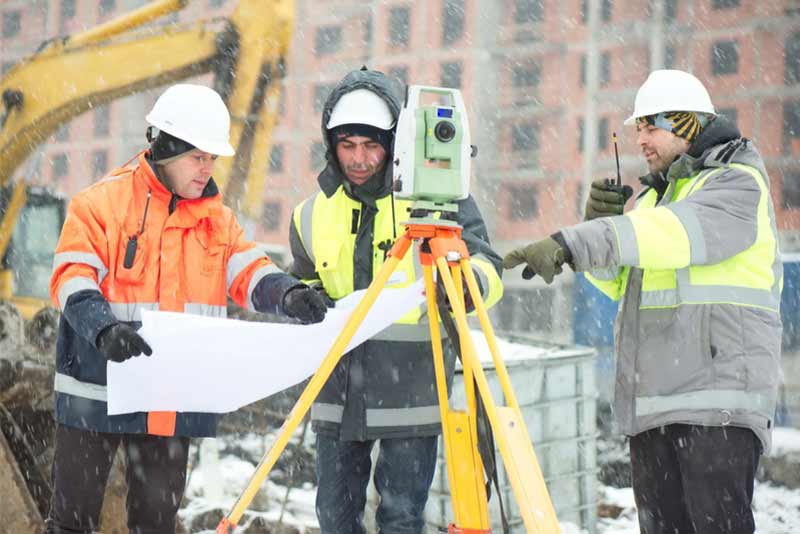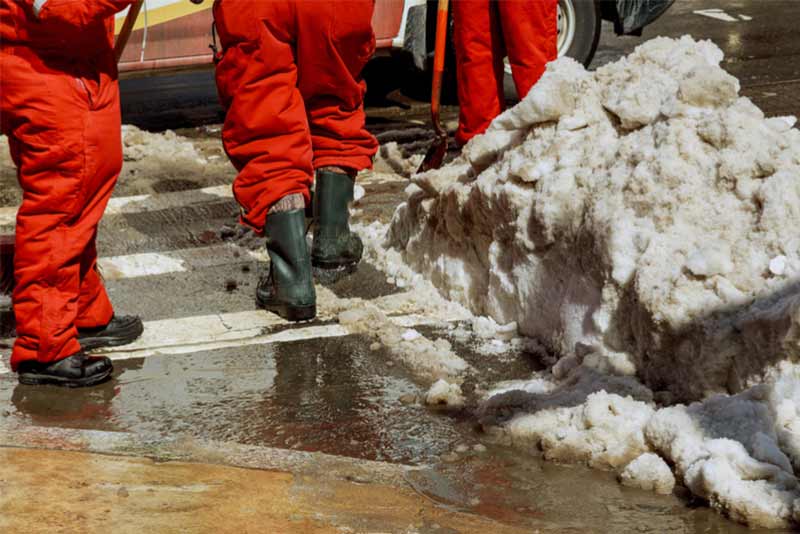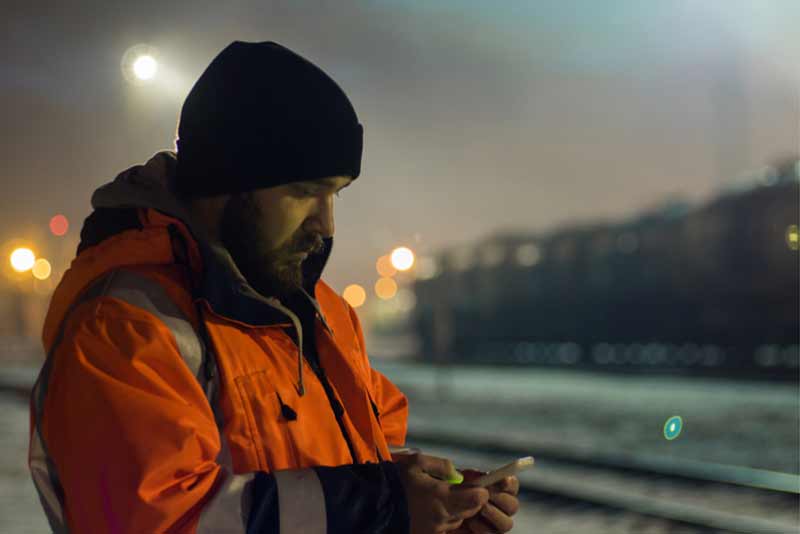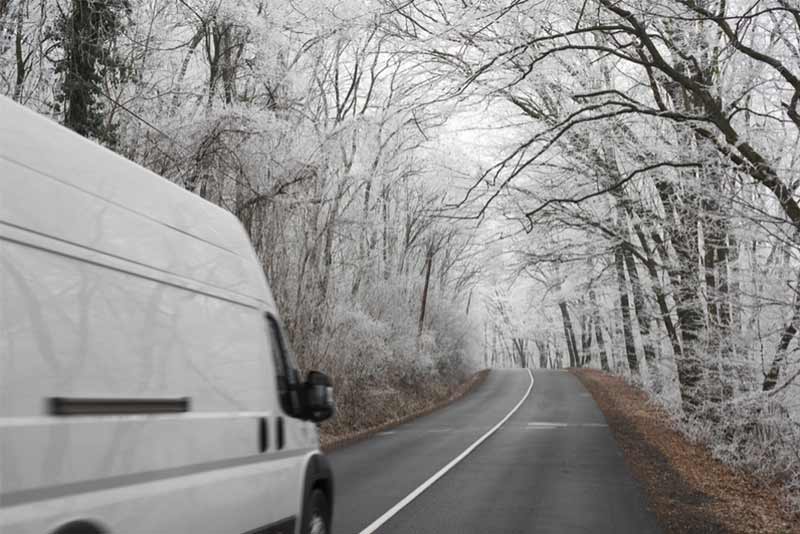Cleaning up your act this Christmas: maintaining workers’ well-being in the winter month
It’s something that’s always reiterated, but ensuring the general health, safety and well-being of your employees and customers is paramount for every business organisation. Although this is true all-year-round, maintaining workers’ well-being in winter is even more vital thanks to the increased health and safety hazards its colder temperatures, decreased daylight hours and adverse weather conditions can present. This is something that particularly effects employees working in construction or the industrial sector, though extra care should also be taken to protect office, retail and hospitality workers.

From a legal standpoint, implementing the correct procedures to prevent accidents and ill health from occurring in your workplace will help your business to achieve compliance with vital Health and Safety regulations. The Health and Safety Executive (HSE) dictates that every employee is entitled to work in an environment where the risk to their health and safety is properly controlled, and it’s the employer’s responsibility to assess the any possible risks in the workplace and takes steps to minimise and prevent them. This involves providing staff with guidance, training and anything else they need to protect their general health, safety and well-being.
In this guide, phs Besafe will be outlining the most common hazards presented to your employees and visitors in winter and the steps you can take to prevent them from occurring.
What are the most common winter Health and Safety risks:
Some of the biggest risks employees, customers and other visitors to your premises can face in autumn and winter include:
However, as well as ensuring your business is compliant with the law, following and implementing the correct Health and Safety procedures will also give you the peace of mind that you’re doing everything you can to reduce the risk of harm to your workers, customers and any other visitors to your premises. Again, if an incident or ill health were to occur, this is something that your organisation would be held accountable for.

How to protect your staff’s health and safety in winter
Now that you’re aware of the most common risks to people’s health, safety and general well-being in the colder months of the year, here’s how you can prevent them from affecting your workers, and any visitors to your business premises:
Dark mornings and evenings
One of the biggest risks facing employees in construction and the industrial sector is being visible when working in environments with low light levels. This is because they could fall or be hit by falling objects or moving vehicles. For railways, ports and similar locations, lack of light is a problem that workers are faced with all-year-round. However, this risk is heightened in the autumn and winter due to decreased daylight hours in the morning and evening (when many people carry out industrial work).
To ensure your employees are visible in the dark, you should supply them with high visibility workwear that complies with the relevant safety standards. This workwear should also be comfortable so that it doesn’t restrict movement, and it should be regularly maintained to prolong its protective properties.
Darkness can also cause an issue for employees working in offices, shops, and hospitality venues. With the evenings getting darker earlier in the autumn and winter months, they’re more likely to be leaving the workplace when there’s a limited amount of light. To prevent the risk of slips, trips and falls, make sure your premises has adequate exterior lighting, particularly near paths and in carparks.

Increased slip risk in and around premises
As well as dark conditions, winter weather can also increase the likelihood of your employees and any visitors to your premises slipping, tripping and falling due to there being leaves, snow and ice on paths. Dirt, leaves and rain can also be easily walked into the building. Some of the steps you should take to prevent these hazards include putting down entrance mats and matting systems to collect debris, and displaying ‘wet floor’ signs when hard flooring is slippery due to rain, mud and leaves.
To reduce the amount of debris being walked into your building and causing a slip risk, you should also be organising for your external paths and walkways to be cleared of snow and ice whenever necessary. You should also ensure that these areas are gritted when needed.
Working in cold environments
Working outside in cold temperatures and conditions such as heavy snow, wind and rain can cause a number of harmful conditions and injuries, such as hypothermia and frostbite. It can also increase the likelihood of colds and the flu being spread throughout your workplace. This is because the germs that cause them thrive in low temperatures, and exposure to cold temperatures in winter can weaken our immune systems.
To keep industrial and construction workers protected from the elements, you should ensure that the high visibility (or other protective workwear) you supply them with have built-in features to keep them warm and dry. This is why our high visibility garments have heavy-duty zips, which are reinforced with a press stud overlap to limit wind chill effect.
As an employer, you can also take steps to prevent hypothermia, frostbite and other cold injuries from affecting your employees by adjusting working schedules in line with the changing weather conditions, providing them with wear gloves, hats and hoods, and ensuring they’re given access to a supply of hot drinks and warm food when working outdoors. You should also provide your staff with training on the symptoms of frostbite and hypothermia to look out for. Cold, flu
and dehydration in offices
In a similar vein, you should educate your workplace
on how to prevent the common cold and the flu from spreading. Although these
viruses won’t be too harmful to most people, the flu can be dangerous if you’re
pregnant, over 65, or suffer from a long-term medical condition (such as
diabetes). Colds and the flu are also the most common reason for staff taking
sick leave, which costs your business money.
As well as encouraging employees to dress in wrap
up against the cold when they work outdoors, you should encourage those in
offices and similar working environments to wash their hands regularly by
putting up signs and providing them with hand sanitisers. These are a great solution
because they can be placed on desks, kept in the kitchen or breakroom, or even
carried around by your staff.

Dangerous
driving conditions
If your employees are frequently required to drive
cars, lorries and vans as part of their job, then your Health and Safety
obligations will also extend to ensuring they’re safe on the road. There are a
number of adverse weather conditions that can affect your driving (such as
increased rainfall, heavy wind, fog, and snow and ice). Unfortunately, many
people don’t adjust their driving speed or style to account for this. With that
in mind, you should provide training to educate your employees on how to drive
safely in these conditions.

Decrease in
exposure to daylight
Winter’s darker mornings and evenings don’t just pose
a risk to employee’s physical health and safety; they can also affect their
mental well-being. SAD (Seasonal Affective Disorder) most commonly affects
people in December, January and February, which is why it’s thought to be caused
by a disrupted body clock and lower serotonin levels due to a lack of sunlight.
Reduce the symptoms of SAD (which include a persistent low mood, irritability
and feeling lethargic) by offering flexible working hours in the colder months
and installing SAD lights in offices.
How
phs Besafe can help you protect your workers
At phs
Besafe, we supply a range of protective workwear to safeguard employees working in various
environments. We also offer a secure uniform destruction and industrial laundering
services to help you manage your workwear supply. Contact
us to find out more.
Cold, flu
and dehydration in offices
In a similar vein, you should educate your workplace
on how to prevent the common cold and the flu from spreading. Although these
viruses won’t be too harmful to most people, the flu can be dangerous if you’re
pregnant, over 65, or suffer from a long-term medical condition (such as
diabetes). Colds and the flu are also the most common reason for staff taking
sick leave, which costs your business money.
As well as encouraging employees to dress in wrap
up against the cold when they work outdoors, you should encourage those in
offices and similar working environments to wash their hands regularly by
putting up signs and providing them with hand sanitisers. These are a great solution
because they can be placed on desks, kept in the kitchen or breakroom, or even
carried around by your staff.
Dangerous
driving conditions
If your employees are frequently required to drive
cars, lorries and vans as part of their job, then your Health and Safety
obligations will also extend to ensuring they’re safe on the road. There are a
number of adverse weather conditions that can affect your driving (such as
increased rainfall, heavy wind, fog, and snow and ice). Unfortunately, many
people don’t adjust their driving speed or style to account for this. With that
in mind, you should provide training to educate your employees on how to drive
safely in these conditions.
Decrease in
exposure to daylight
Winter’s darker mornings and evenings don’t just pose
a risk to employee’s physical health and safety; they can also affect their
mental well-being. SAD (Seasonal Affective Disorder) most commonly affects
people in December, January and February, which is why it’s thought to be caused
by a disrupted body clock and lower serotonin levels due to a lack of sunlight.
Reduce the symptoms of SAD (which include a persistent low mood, irritability
and feeling lethargic) by offering flexible working hours in the colder months
and installing SAD lights in offices.
How
phs Besafe can help you protect your workers
At phs
Besafe, we supply a range of protective workwear to safeguard employees working in various
environments. We also offer a secure uniform destruction and industrial laundering
services to help you manage your workwear supply. Contact
us to find out more.